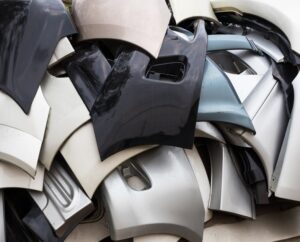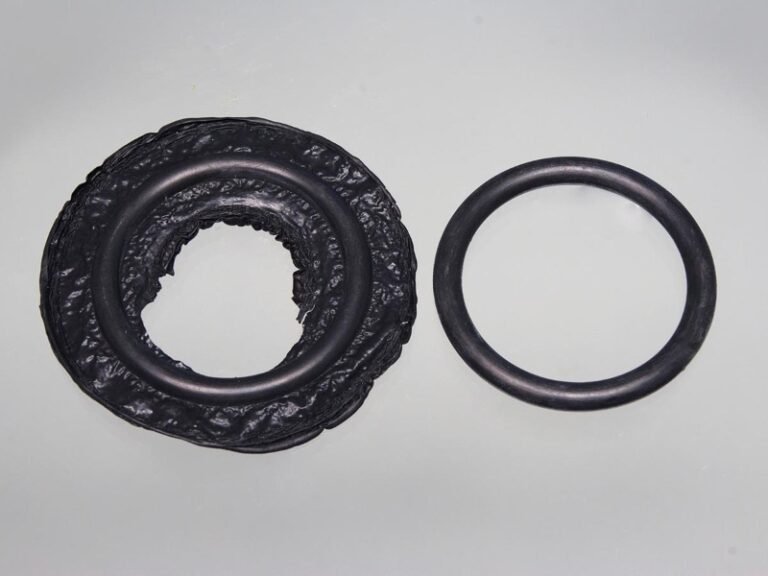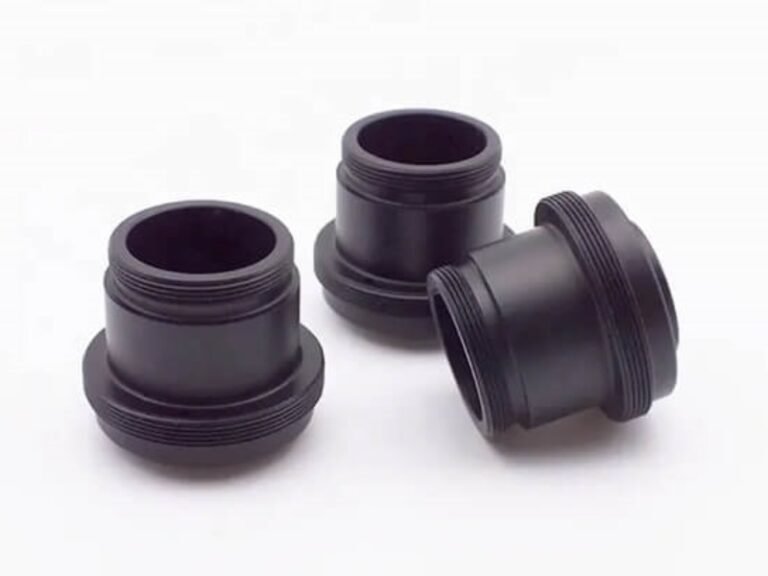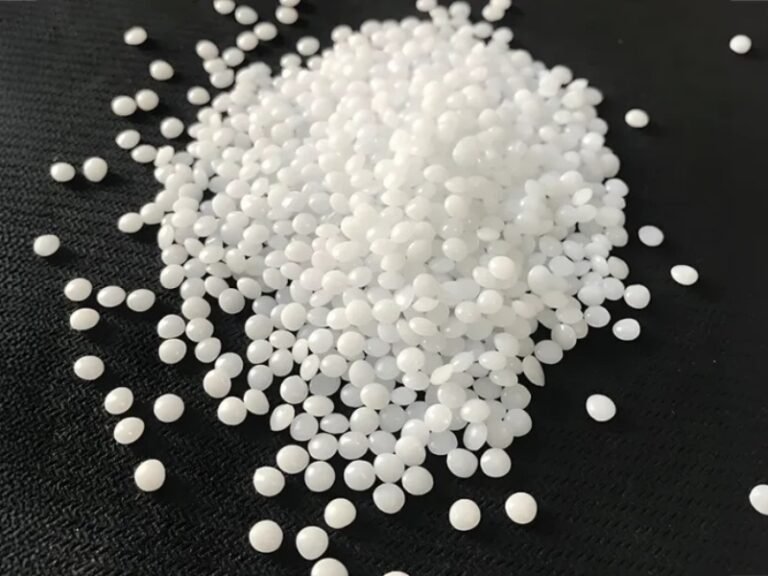With the development of automobile technology, the functions of automobiles are becoming more and more perfect, and the structure of automobiles is becoming more and more complex. Traditional automobiles are usually composed of thousands of parts, and modern high-end cars are composed of tens of thousands of parts. In order to meet the requirements of automobile energy saving, environmental protection, safety and comfort, and to achieve the goal of lightweight, high strength, and high performance, the raw car materials that constitute automobiles have also undergone tremendous changes.
At Zhongde, we provide expert material selection and custom automotive molding services to meet evolving automotive needs. Our solutions deliver precise, durable components that support lightweight, high-performance vehicle parts.

Car Materials Selection and Molding Service
Different Car Materials Used in Automotive Manufacturing
Automotive materials are generally classified into metallic and non-metallic types. With advancing technology, composite and nanomaterials are increasingly applied in vehicles.
Let’s take a look at the common parts of a car and the main raw materials list of the automobile.
Car Body Materials
High Strength Steel Plate
Although the tensile strength of the former high-strength steel plate is higher than that of the low-carbon steel plate, the elongation is only 50% of the latter, so it is only suitable for CNC machining parts with simple shapes and small extension depth. The current high-strength steel plate is made by adding appropriate trace elements into low-carbon steel and rolling through various treatments. Its tensile strength is as high as 420N/mm2, which is 2 to 3 times that of ordinary low-carbon steel. Excellent, it can be rolled into a very thin steel plate and is an important material for a lightweight body. By 2000, its usage had risen to about 50%. China Chery Automobile Co., Ltd. cooperated with Baosteel. In 2001, the amount of high-strength steel used in the prototype car was 262 kg, accounting for 46% of the body steel plate, which played a good role in reducing weight and improving body performance.
Aluminum Alloy
Compared with automobile steel plates, aluminum alloy has the advantages of low density (2.7 g/cm³), high specific strength, corrosion resistance, good thermal stability, easy forming, recyclability, etc., and the technology is mature. Since all aluminum alloys can be recycled and reused, they are very popular among environmentalists.
Magnesium Alloy and Titanium Alloy
The density of magnesium is 1.8g/cm3, which is only 35% of the density of steel and 66% of the density of aluminum. In addition, it has high specific strength, high specific stiffness, good damping and thermal conductivity, strong electromagnetic shielding ability, and good dimensional stability, so it has been widely used in the aviation industry and automobile industries.
The specific gravity of titanium is 4.6g/cm³, which is only 1/2 of that of iron, but its strength and hardness exceed steel, and it is not easy to rust. Automobile engine parts cast with titanium alloy are lighter, stronger, and more corrosion-resistant, and titanium alloy bodies can withstand greater force.
Foam Alloy Sheet
The foam alloy plate is made of powder alloy, which is characterized by low density, only 0.4~0.7g/cm³, and good elasticity. After being compressed and deformed by force, it can restore the shape of the raw material by its own elasticity. There are many types of foam alloy plates. In addition to foam aluminum alloy plates, there are foam zinc alloy, foam tin alloy, and foam steel.
Engineering Plastics
Compared with general-purpose plastics, engineering plastics have excellent mechanical properties, electrical properties, chemical resistance, heat resistance, wear resistance, dimensional stability, etc., and are lighter than the metal materials to be replaced and consume less energy during molding.
High-strength Fiber Composite Material
Composite material is a kind of multi-phase material, which is composed of organic polymer, inorganic non-metal, metal and other raw materials. At present, glass fiber reinforced resin composite materials and carbon fiber-reinforced resin composite materials have been successfully applied in automobiles.
Ceramic Materials
Due to the special mechanical properties of ceramics and the physical properties of heat, electricity, light, etc., the application of ceramic materials, especially special ceramics in automobiles, has received increasing attention.

Auto Engine Cover Materials
The structure of the engine hood is mainly composed of inner and outer panels and a locally reinforced version. The inner plate and the outer plate are combined by flanging, bonding, etc., and the local reinforced version is welded or bonded to the installation place of the chain and the door lock to increase the assembly rigidity. The shape of the outer panel should be consistent with the whole vehicle, and there should be anti-dent and anti-corrosion requirements. The inner panel should have higher rigidity, and be punched with various shapes of pockets, ribs, and holes to install accessories. The traditional engine cover uses low-carbon steel as the material and is manufactured by casting. With lightweight as one of the main directions of automobile development, the use of new lightweight materials continues to increase. Main materials for engine cover:
- Mild Steel
- High Strength Steel
- Aluminum alloy
- Composite materials
- Magnesium alloy
Auto Engine Block Materials
The cylinder block material should have sufficient strength, good castability and machinability, and the price should be low, so the commonly used cylinder block materials are cast iron and alloy cast iron.
However, the use of aluminum alloy cylinders is more and more common, because aluminum alloy cylinders are light in weight, have good thermal conductivity, and the capacity of the coolant can be reduced. After the engine starts, the cylinder block reaches the operating temperature quickly, and the thermal expansion coefficient is exactly the same as that of the aluminum piston. The gap changes little after heating, which can reduce impact noise and oil consumption. Moreover, the thermal expansion is the same as the aluminum alloy cylinder head, and the work can reduce the thermal stress caused by thermal shock.
Auto Crankshaft Materials
The crankshaft is a key engine component that converts the linear force from the connecting rods into rotational torque. To withstand complex stresses like bending and torsion during operation, it must offer high strength, rigidity, wear resistance, and good balance.
Crankshafts are commonly made from medium carbon steel, medium carbon low-alloy steel, and ductile iron (nodular cast iron). Typical materials include 45 steel, 53 steel, 35CrMo, and 40Cr.
To reduce cost without compromising performance, modern crankshafts are increasingly produced using cast pearlitic ductile iron, replacing traditional forged and heat-treated steel options.
Auto Wheel Hub Material
The wheel hub is a cylindrical metal part with the inner profile of the tire supporting the tire and the center-mounted on the shaft. There are many types of wheels according to the diameter, width, molding method, and material.
Steel heel: Carbon Steel, Ductile Iron
The steel wheel hub has a simple manufacturing process, relatively low cost, and strong resistance to metal fatigue. But it has a large weight, large inertial resistance, poor heat dissipation, and is very easy to rust.
Aluminum Alloy Wheels: Aluminum Alloy A356.20
The aluminum alloy wheel is made of aluminum as the basic material and is made of manganese, magnesium, chromium, titanium, and other metal elements. Its advantages are light weight, high manufacturing precision, high strength, low inertial resistance, strong heat dissipation capacity, and good visual effects, but the manufacturing process is complicated and the cost is high.
Magnesium Alloy Wheels
Due to its lightweight (specific gravity of 1.74g/cm³) and good mechanical properties, it has been used in batches in the vehicle and electronic fields.
Carbon Fiber Composite Wheel Hub
Composite materials are materials with strong vitality that emerged in response to the development of modern science and technology. Because the composite material has special vibration-damping characteristics, it can absorb shock and reduce noise, has good fatigue resistance, is easy to repair after damage, and is easy to form integrally, so it can be used to manufacture automobile bodies, stressed components, transmission shafts, engine mounts, and their interiors structure.
Latest Trends and Innovations in Automotive Materials
As the automotive for injection molding industry accelerates toward electrification, intelligence, and carbon neutrality, the application of automotive materials is becoming increasingly diversified and performance-oriented.

1. Lightweight Materials Driving Structural Upgrades
To improve overall vehicle efficiency and extend the driving range of electric vehicles, materials are evolving to be lighter and stronger. Manufacturers are seeking materials that combine strength, rigidity, and weight reduction to replace traditional structural materials, lightening the body and chassis without compromising safety and performance.
2. Composite Materials Enabling Design Flexibility and Performance Balance
Composite materials, known for their multifunctionality, high strength, and customization potential, are widely used in structural, interior, and functional components. Their flexible molding capabilities and mechanical performance allow for greater freedom in lightweight and integrated vehicle design.
3. Enhanced Thermal Management and Protection for Electrification
Electric vehicles impose higher demands on battery system protection, thermal management, and structural support. Materials are required to simultaneously offer insulation, flame retardancy, thermal conductivity, and low weight, enabling functional integration in structural design.
4. Surface and Microstructure Innovations
Under conditions involving frequent loads, corrosion, and wear, higher demands are placed on surface performance. Innovations in microstructure design, surface treatment, and interface technologies are improving corrosion resistance, wear resistance, and reducing friction, thereby extending component lifespan and reliability.
5. Focus on Eco-Friendly and Sustainable Materials
Driven by carbon neutrality goals, the industry is transitioning to greener manufacturing. Materials must now be recyclable, low-emission, and environmentally friendly. The application of bio-based and recycled materials is expanding, and life-cycle material management is becoming a key concern for OEMs and supply chains.
6. Integration of Smart Functional Materials into Electronic Systems
With the rise of smart cockpits and autonomous driving, materials are required not only to provide structural and protective functions but also to possess electromagnetic compatibility, sensing, and photoelectric properties—supporting future intelligent mobility systems.



